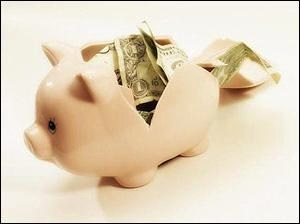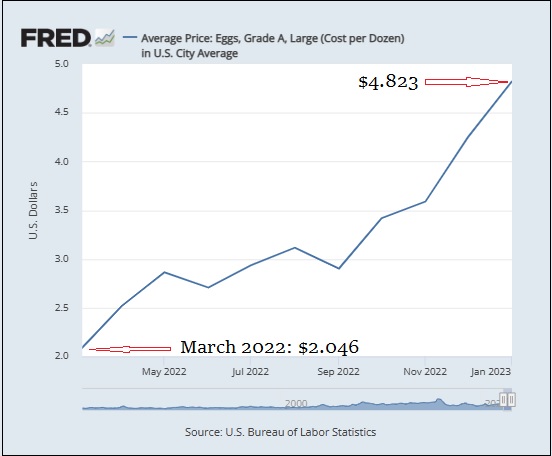By Pam Martens and Russ Martens: March 7, 2023 ~
 On Friday, March 4, 2022, the Dow Jones Industrial Average closed at 33,614.7971. Yesterday, one year later, the Dow closed at 33,431.44, a negligible loss of a fraction of one percent – but still a loss. The Dow is composed of just 30 stocks.
On Friday, March 4, 2022, the Dow Jones Industrial Average closed at 33,614.7971. Yesterday, one year later, the Dow closed at 33,431.44, a negligible loss of a fraction of one percent – but still a loss. The Dow is composed of just 30 stocks.
The S&P 500, a broader stock market index, includes the common stocks of 500 of the largest companies in the U.S. Over the past year, the S&P 500 fared even worse than the Dow. It went from 4,328.8729 on Friday, March 4, 2022 to yesterday’s closing price of 4,048.42 – a decline of 6 percent.
The tech heavy Nasdaq Composite, which consisted of 3,607 component companies as of yesterday according to Nasdaq, delivered the worst performance of the three major indices over the past year. It traveled from 13,313.438 on Friday, March 4, 2022 to a closing price of 11,675.737 yesterday – a decline of 12.3 percent.
While the average American’s investment money was shrinking over the past 12 months, inflation was eating away at the purchasing power of their disposable income.
Among the most extreme examples of the toll of inflation on food costs was the price of eggs. As the chart below from the St. Louis Fed indicates, the average price of a box of Grade A, large eggs went from $2.046 in March of 2022 to $4.823 in January of this year.
The cold, hard facts on what the U.S. consumer’s money has been doing over the past 12 months raises puzzling questions about why consumer sentiment is holding up so well.
In June of last year, consumer sentiment, as measured by the University of Michigan Survey, slumped to the lowest recorded level since the University began collecting the data in November 1952. But as the chart below indicates, since that time consumer sentiment has made a puzzling climb back.
Another survey that takes the pulse of the U.S. consumer comes from the Conference Board. Its monthly Consumer Confidence Survey fell again in February for the second consecutive month.
The Conference Board’s Expectations Index, which is based on consumers’ short-term outlook for income, business, and labor market conditions, fell to 69.7 in February from a downwardly revised 76.0 in January. The Conference Board notes that “the Expectations Index has now fallen well below 80 — the level which often signals a recession within the next year. It has been below this level for 11 of the last 12 months.”
Against this backdrop comes Federal Reserve Chairman Jerome Powell testifying before the Senate Banking Committee this morning on the Fed’s monetary policy. The Fed has raised its benchmark interest rate – the Fed Funds Rate – eight times since March 17 of last year, moving from a zero-bound interest rate policy to a current target range of 4.5 to 4.75 percent. Democrats on the Senate Banking Committee are expected to express concerns this morning that the Fed is going to crash the economy with continued rate hikes while Republicans are likely to press the Fed to reassure markets that it remains focused on bringing down long-term inflation trends.



